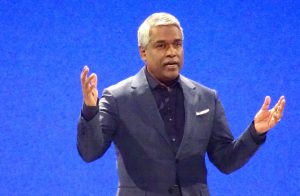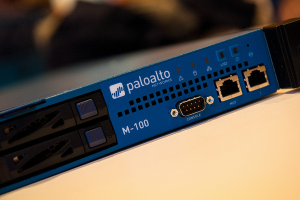2015 is The Year of Mobile Payments
![]() We’ve come a long way from over-the-counter cash payments and swiping credit cards every time we make a purchase. The dawn of the mobile era has sporadically signified the boom in the mobile payments industry. It’s because of the exponential rise of broadband networks and mobile devices that’s made way for the payments revolution, leaving behind cash, checks and plastic. Leave it to Cyber Monday to prove the economic prowess of mobile payments: these figures revealed by PayPal are compelling: they saw a 514% increase in mobile payments from the previous year.
We’ve come a long way from over-the-counter cash payments and swiping credit cards every time we make a purchase. The dawn of the mobile era has sporadically signified the boom in the mobile payments industry. It’s because of the exponential rise of broadband networks and mobile devices that’s made way for the payments revolution, leaving behind cash, checks and plastic. Leave it to Cyber Monday to prove the economic prowess of mobile payments: these figures revealed by PayPal are compelling: they saw a 514% increase in mobile payments from the previous year.
Although the numbers are incredible, we’re just scratching the surface of the huge potential looming the mobile payments sea. More tools are targeting mobile payments developers, and investors are showing more interest with an increase in funding for this area. An Intuit infographic shows where the industry is heading and what lies in that silver lining.
Present-day Payment Trends
How we pay today is going to be different in a few years time. At the moment, US consumers are relying heavily on debit cards (74%) and credit card (64%) to pay for commodities. Mobile payments sits at the bottom of consumer interest, with only 5% engagement. But this flow could take a full turn in 4 years time, as the use of cash is expected to decline 4% year-over-year, with a shrinkage amounting to $1 trillion by 2015.
The Rise of Alternative Payments
With the ease of use built into alternative payments such as mobile, online and contactless gaining a strong following from consumers and businesses alike, the industry’s revenue is looking to balloon by 2015. From the recorded income generated by these avant-garde payment schemes of $740 billion in 2010, the study reveals that it will reach a jaw-dropping $2.7 trillion in 2015. Driving forces include an increase in internet and smartphone use, e-commerce adoption, mobile commerce adoption and manufacturer adoption of NFC.
The Proliferation of Smartphones
Worldwide smartphone explosion is a key driver in the expanding territory of mobile payments. At present, 40% of mobile users and 37% of small business owners in the US own smartphones. With just few clicks, anytime and anywhere, money transactions can be completed. The savings in time and effort are going anchor small businesses’ dependence on mobile payments sooner or later. From $241 billion in global mobile transactions, it will likely increase to $1 trillion by 2015. Purchasing virtual goods through mobile devices will be augmented to as much as $2.5 billion in four years time.
Those surveyed are very optimistic that mobile payments will be mainstream globally soon, while 9% think that it is already a norm. Consumers are seeing the following situations where mobile spending would spur: groceries at the supermarket, clothes at a department store, a phone bill at a local wireless store, coffee at a local coffee shop, a sofa at a furniture store, and even taxi ride around town.
The Age Factor and Hurdles
![]() The younger and middle-aged, 24-44 years old consumers are appears to engage in mobile transactions like banking, paying bills, shopping and coupons. The apprehension of the much younger and older (group of 13-15, 16-17, 45-54, 55-64 and 65 and up) comes from concerns about security (64%), availability of other payment methods (61%), limit use of smartphones to just emails and calls, irrelevance of mobile payment scheme, the fear of information leak and the limited number of shops that have adopted to this kind of payment.
The younger and middle-aged, 24-44 years old consumers are appears to engage in mobile transactions like banking, paying bills, shopping and coupons. The apprehension of the much younger and older (group of 13-15, 16-17, 45-54, 55-64 and 65 and up) comes from concerns about security (64%), availability of other payment methods (61%), limit use of smartphones to just emails and calls, irrelevance of mobile payment scheme, the fear of information leak and the limited number of shops that have adopted to this kind of payment.
Although the eradication of cash and credit card payments is realistic, it is going to take a while before the human race can actually turn their backs on “what used to be,” the tangibility of cash and coins. Nevertheless, all signs are leading to the success of mobile payments, with a stiff competition coming in the future. Look for increasing development with NFC technology: it will still be a key player as it paves the ground for mobile payments revolution. PayPal predicts that cashless and cardless methods will dominate by the year 2016.
![The Digital Wallet and the Future of Payments [INFOGRAPHIC]](http://blog.intuit.com/wp-content/blogs.dir/1/uploads/11.11.04_DigitalWallet-Quickbooks-JMJ-102-581x3000.png)
via: The Digital Wallet and the Future of Payments [INFOGRAPHIC]
A message from John Furrier, co-founder of SiliconANGLE:
Your vote of support is important to us and it helps us keep the content FREE.
One click below supports our mission to provide free, deep, and relevant content.
Join our community on YouTube
Join the community that includes more than 15,000 #CubeAlumni experts, including Amazon.com CEO Andy Jassy, Dell Technologies founder and CEO Michael Dell, Intel CEO Pat Gelsinger, and many more luminaries and experts.
THANK YOU













